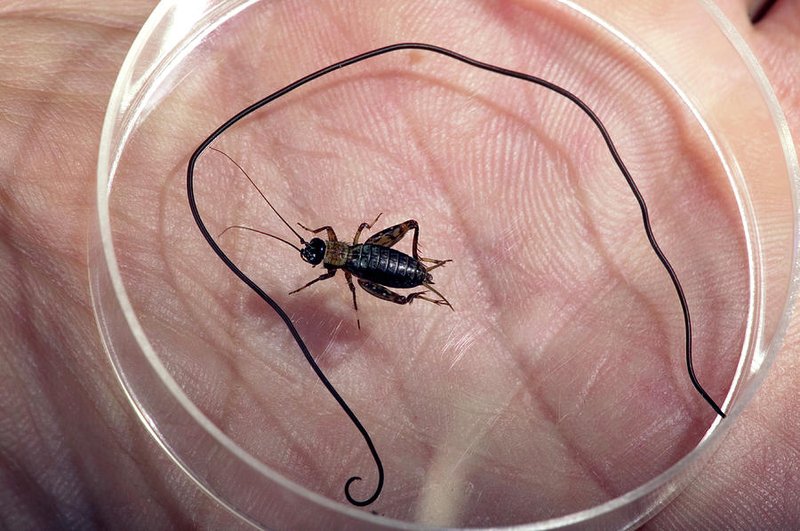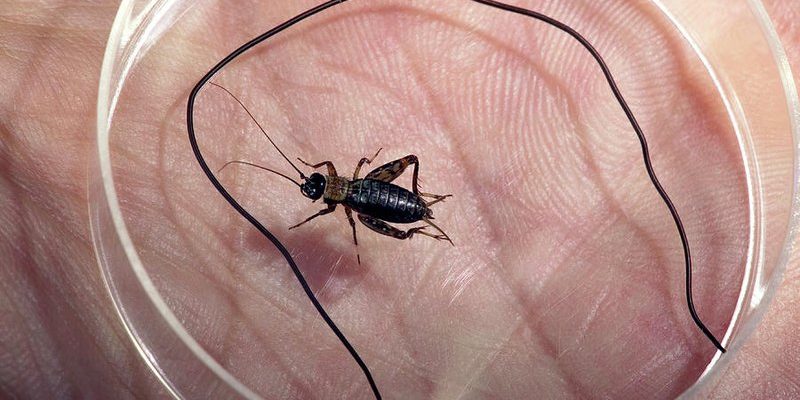
Let’s take a closer look at these remarkable creatures. Hairworms have a peculiar knack for manipulating their hosts to lead them to water, where they can finally emerge and continue their life cycle. Think of it as a twisted form of puppetry, where the hairworm takes control of its host’s actions. But where do these creepy crawlers live, and how widespread are they across the globe? In this article, we’ll delve into their documented range and distribution, exploring how they’ve made their homes in various environments around the world.
What Are Hairworms?
Before we dive into their distribution, it’s helpful to understand exactly what hairworms are. Hairworms are a type of parasitic worm that belong to the phylum *Nematomorpha*. They typically measure a few centimeters in length and possess a long, thin, and hair-like appearance—hence their name. These surprising parasites start their lives as eggs, which hatch into larvae that latch onto unsuspecting insects.
Once inside, the hairworm grows and develops, often manipulating its host’s behavior. It’s almost like a horror movie where the “puppet” isn’t aware of the strings being pulled. Once they reach maturity, they compel their host to jump into water, allowing the hairworm to exit and continue its lifecycle. This manipulation is not only fascinating but also raises questions about the complex interactions between species in the ecosystem.
The Life Cycle of Hairworms
Hairworms follow a captivating life cycle that involves several stages. First, it begins with the eggs, which are often laid in or near water sources. When the eggs hatch, the larvae seek out insect hosts such as grasshoppers or crickets. Here’s how it typically unfolds:
1. Egg Stage: Hairworms lay their eggs in moist environments. The eggs hatch into larvae when conditions are right.
2. Larval Stage: The larvae attach to the bodies of insects, entering their bloodstream and eventually growing into mature worms.
3. Mature Worm Stage: Once fully developed, the hairworms manipulate their host’s behavior, often driving them to water.
4. Emergence: Finally, the mature worms exit their host’s body, ready to find a mate, lay eggs, and repeat the cycle.
This cycle shows how intertwined the lives of hairworms and their hosts are. The hairworm’s entire existence hinges on the host, making them reliant on one another in a bizarre dance of life and death.
Global Distribution of Hairworms
Now let’s address the big question: Where can you find hairworms around the world? Hairworms have a wide distribution. They are mainly found in temperate and subtropical regions, but specific species can exist in various habitats. Here’s a quick overview of their global presence:
– North America: Certain species inhabit grasslands and forests, primarily targeting local insects.
– Europe: Hairworms thrive in damp areas like ponds and marshlands, taking advantage of the rich insect populations.
– Asia and Africa: Various species have been documented, showcasing a range of adaptability to different climates.
Understanding the distribution of hairworms helps scientists study their ecology and the ecosystems they inhabit. Their presence can indicate the health of an environment, as they rely heavily on specific host insects.
Notable Species of Hairworms
While discussing hairworms, it’s important to highlight some notable species. Here are a few that have caught the attention of researchers:
- Horsehair Worm (*Gordius spp.*): These are perhaps the most well-known hairworms, often found in freshwater habitats and known for their long, thin appearance.
- Spaghetti Worm (*Nematodes spp.*): Common in various settings, these worms are notorious for their long, hair-like bodies that can grow several meters in length.
- Cricket Hairworm (*Horsehair Worms*): Targeting crickets specifically, this species showcases the fascinating nature of host selection.
Each of these species contributes uniquely to the ecological web, demonstrating how diverse and adaptable hairworms can be. Their specific adaptations to different hosts and environments highlight the incredible complexity of parasitic life.
Ecological Impact of Hairworms
You might be wondering, what role do hairworms play in their ecosystems? While they may seem like a simple parasite, hairworms contribute significantly to the balance of nature. By preying on insect populations, they help regulate these communities.
For instance, when hairworms infect grasshoppers, they can affect the population dynamics of these insects, impacting plant communities as well. This parasitic behavior can lead to increased plant growth due to reduced herbivory, showcasing a delicate balance in the ecosystem.
Moreover, the presence of hairworms can be indicative of environmental health. Healthy populations of hairworms suggest abundant insect hosts and, consequently, a thriving ecosystem. Understanding their role helps scientists develop insights into biodiversity and ecosystem management.
Challenges in Studying Hairworms
Researching hairworms might sound straightforward, but it comes with its set of challenges. The very nature of these parasites makes them difficult to study. Here are a few hurdles scientists face:
– Life Cycle Complexity: Their ability to manipulate host behavior complicates tracking their life stages in the wild.
– Limited Awareness: Many people, including biologists, may not even recognize different species of hairworms, limiting our understanding of their distribution.
– Environmental Changes: Factors like climate change and habitat destruction can affect their populations and the insects they depend on.
Despite these challenges, ongoing research efforts aim to uncover more about hairworms and their ecological significance. Every new discovery adds a piece to the puzzle of how these creatures fit into the larger tapestry of life.
Hairworms are truly one of nature’s peculiar wonders. Their life cycle, marked by manipulation and dependency, raises fascinating questions about parasitism and ecology. From their documented range across the globe to their significance in maintaining ecological balance, these worms remind us of how intricate and interconnected life can be.
As we continue to explore the mysteries surrounding hairworms and their habitats, we gain valuable insights into our environment. Whether you’re a curious nature lover or just intrigued by the quirks of life, understanding hairworms enriches our appreciation for the natural world. So next time you think about the unseen interactions happening all around us, remember the hairworm—the tiny puppet master of the insect world.

